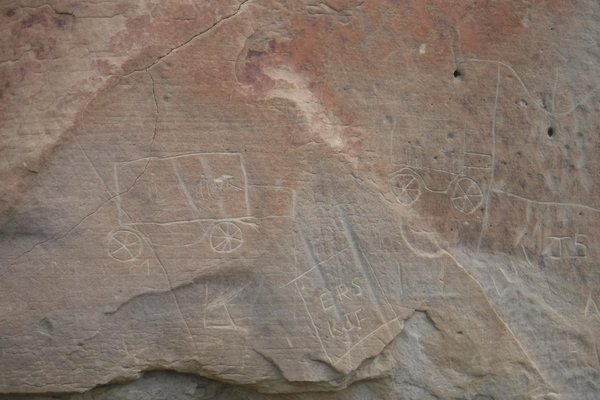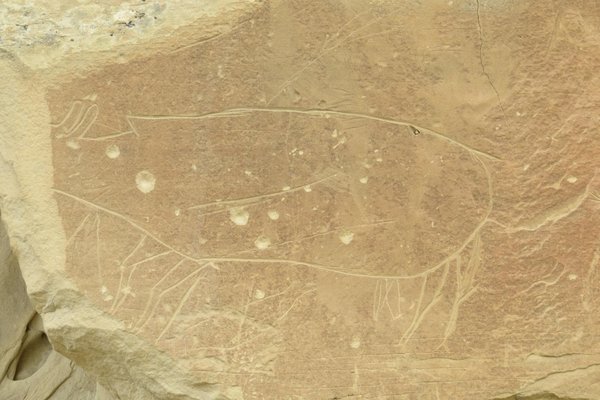Canada
Writing-on-Stone / Áísínai’pi
Writing-on-Stone / Áísínai’pi, with its thousands of years old rock art, is a living sacred landscape for the Blackfoot people.
This prairie area holds thousands of examples of indigenous rock art, carved into the sandstone. They date from ca. 3,000 BP until and after the Contact Period. For the Blackfoot society of the past and the present, there is also a spiritual connection to its impressive landforms such as hoodoos and canyons.
Community Perspective: located in a pretty hoodoo landscape, the trails are worth exploring and the guided rock art tours are well-executed at the main location of Áísínai’pi. The other two components, Haffner Coulee and Poverty Rock, are unreviewed so far.
Site Info
Official Information
- Full Name
- Writing-on-Stone / Áísínai’pi (ID: 1597)
- Country
- Canada
- Status
-
Inscribed 2019
Site history
History of Writing-on-Stone / Áísínai’pi
- 2019: Inscribed
- Inscribed
- 2014: Revision
- Successor to Áísínai’pi (2004)
- Type
- Cultural
- Criteria
- iii
Links
- UNESCO
- whc.unesco.org
- Official
-
- albertaparks.ca — Alberta Parks: Writing-on-Stone PP
All Links
UNESCO.org
- whc.unesco.org — whc.unesco.org/
Official Website
- albertaparks.ca — Alberta Parks: Writing-on-Stone PP
Community Information
- Community Category
- Cultural Landscape: Associative
Travel Information
Recent Connections
-
Dual WHS names
Áísínaiʼpi in the Blackfoot language me… -
Built in the 2nd Millennium BC
Most of the dated archaeological remain… -
Pictographs
Connections of Writing-on-Stone / Áísínai’pi
- Geography
-
-
Canyons
-
Mississippi Basin
The Milk River flows through the park and is unique in Alberta as it is the only river in the province that flows south into the Missouri River, which is part of the larger Mississippi River basin
-
- Trivia
-
-
Minority communities
The Blackfoot Confederacy (Siksikáítsitapi)See en.wikipedia.org
-
- Ecology
- World Heritage Process
-
-
Inscribed on a single criterion only
Crit iii -
Perfect Inscriptions
2019
-
- Religion and Belief
-
-
Living indigenous religions
The landscape is considered to be sacred by the Blackfoot people, and centuries-old traditions are perpetuated today in various ceremonies and in the respect in which the place is held. (OUV)
-
- Human Activity
- Timeline
-
-
Built in the 2nd Millennium BC
Most of the dated archaeological remains cover a period from 1800 BCE up to the beginning of the postcontact period (AB ev)
-
- WHS Names
-
-
Dual WHS names
Áísínaiʼpi in the Blackfoot language means "it is pictured / written" (or “place where things are being written"), while the English name Writing-on-Stone is more descriptive of what the European colonists encountered. So, different but similar, which may be attributed to exoticizing of indigenous languages.
-
News
No news.
Recent Visitors
Visitors of Writing-on-Stone / Áísínai’pi
- AYB
- brornt
- Christoph
- Christravelblog
- Colossus
- CynthiaW
- Don Irwin
- DouglasR
- Els Slots
- Frédéric M
- Frederik Dawson
- GabLabCebu
- George Gdanski
- GeorgeIng61
- Harry Mitsidis
- janameerman
- Janos
- Jay T
- Jim
- JL
- Lara Adler
- Lithobates
- Lucas Del Puppo
- Lucio
- Ludvan
- Philipp Leu
- Priyaranjan Mohapatra
- Randi Thomsen
- Reisedachs
- Roger Ourset
- Roman Bruehwiler
- Rosemary
- Slavi
- Svein Elias
- Thomas van der Walt
- Tim Allen
- ZCTLife
- Zoë Sheng
Community Reviews
Show full reviews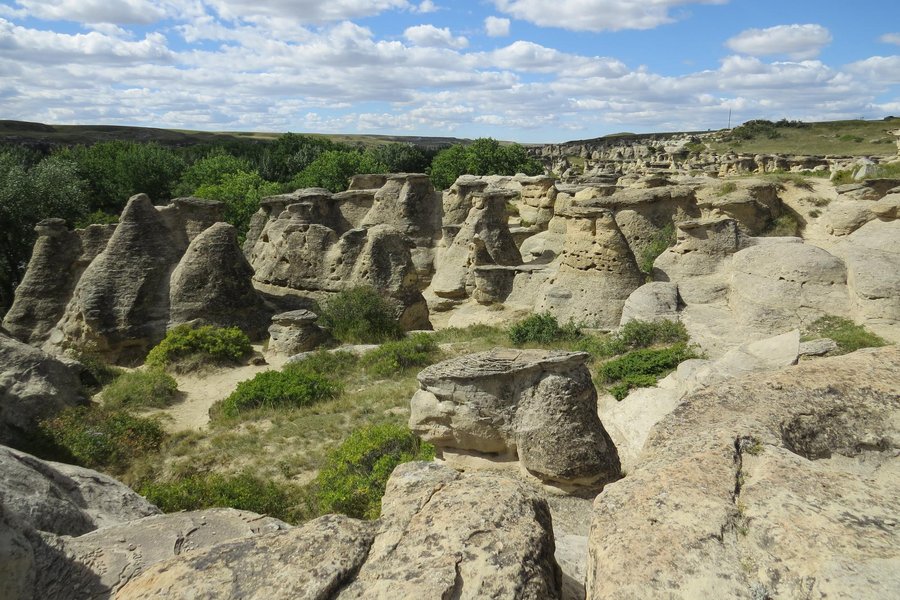
This Alberta provincial park WHS is still a sacred site for First Nations people, so, the site is carefully managed both to protect and interpret the 2,500 years of writing found here. Of course, plenty of tourists also come for camping, to explore along the river, and for hiking, but the rock art is the star. Be sure to take a guided tour, as the rangers are exceptional. Some of the art can be seen hiking by yourself, but the best examples are only visible by tours. I also needed help identifying and interpreting what I was viewing. Amateurs often ascribe fanciful stories to the art, so most visitors need someone who understands the culture deeply to bridge the 2,500 year gap and to help us imagine the scenes from long ago. Our group’s guide was able to tell engaging stories about the origins of the Blackfoot people, including how they got that name, and about the different tribes within the Blackfoot Confederacy. Viewing the art then becomes more of a cross-cultural learning experience.
The hoodoo rock outcroppings on the bluff overlooking the Milk River below make for some exceptional hiking, with some fascinating labyrinth turns. And as I picked my way through the narrow path, I heard beautiful singing in the native tongue, a reminder that this is a living sacred site. That trail led me to the Battle Scene, likely 19th century, which is one of the best carvings on the Great Plains. I recommend doing some …
Keep reading 0 comments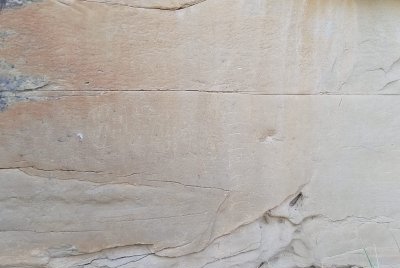
I guess this may just be the perspective of someone who was unable to go on a guided tour here (due to scheduling, so try to be here in the morning), but I found Writing-on-Stone to be not too outstanding of a cultural WHS, but just deserving enough. Without the tour, one can only really observe the rock art by walking the Hoodoo Trail. Even then, spotting a glyph is challenging, even with the guidebook telling you exactly what to look out for. There were a couple that I couldn't see no matter how much I stared at every inch of the rock face. I'll echo the thought of Frédéric that Stop 7 was the clearest example on the trail, and the only one I can still remember vividly months later other than the battle scene. Even then, the quality of the art is nothing to be 'writing-to-home' about. The petroglyphs simply stand as testament to the resilience of the Blackfoot in the constantly changing times. Throw in the lovely scenery of the hoodoos and the Milk River, and one can understand why the Blackfoot saw this place as sacred ground. It's worth the long journey, hours away from any cities. I visited in July 2024, and it was really hot even past 18:00 in the evening. And though there were many rattlesnake warnings, I learned later that those in the Canadian prairies are a lot less dangerous, venomous, and aggressive than their southern counterparts, so don't fear too much …
Keep reading 0 comments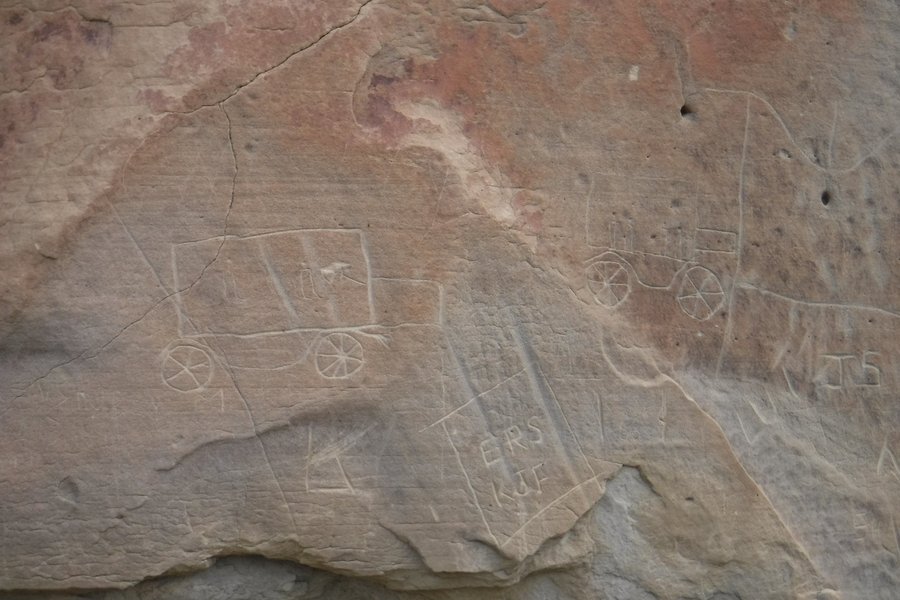
I visited Writing-on-Stone Provincial Park on a roadtrip through southern Alberta in August 2021. In our itinerary, it was sandwiched between Dinosaur Provincial Park and Waterton Lakes National Park. On the way to the site, we took a diversion to Medicine Hat and Red Rock Coulee (interesting ochre rock concretions in the middle of the prairies). Please note that if you follow this route, there will be no gas stations after Medecine Hat. We learned this the hard way and almost ran out of gas. A long diversions to Bow Island and Route 3 was necessary. Rarely have I felt more in the middle of nowhere than in this remote corner of Alberta.
But back to Writing-on-Stone Provincial Park. We had a nice camping spot to spend the night after our long day on the road and before the next day's sightseeing. The park is very well laid out, with access to the Milk River for swimming and with shelters for rain protection and cooking (very handy on a stormy evening!). For our second day in the park, and a real day of sightseeing, we opted for the Rock Art in Áísínai'pi tour. In August 2021, this guided tour of the Archeological Preserve cost $19 per person. We met our guide at the visitor centre (where trilingual Unesco plaques and bilingual inscription certificates are located) at the appointed time and boarded the bus to the reserve. Visitors who preferred to follow the group in their cars (and thus avoid …
Keep reading 0 comments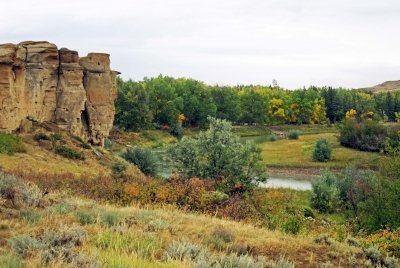
Duly vaccinated and tested, I made my first foray out of the country last Saturday on a day trip to Writing-on-Stone / Áísínai’pi, the only World Heritage Site in southern Alberta that I had not yet visited. As has been noted, Writing-on-Stone has similarities to Dinosaur Provincial Park, but its inscription is cultural versus natural, and is very much based on the significance of the landscape to the Blackfoot people.
As can be easily inferred from the title of this site, rock art plays a prominent role in why the site was inscribed -- in fact, this park contains the greatest concentation of rock art in the Great Plains of North America. The Blackfoot and their predecessors have left rock carvings that are almost 2000 years old, though most of the older art is fainter. Newer rock art, such as the battle scene found on the Hoodoo Trail, includes evidence of post-European contact, to include horses and guns. Also in evidence in places were grafitti from more recent visitors traveling through the valley, which has led the park to erect fences around some of the rock art, and to restrict a large section of the park to visitors unless on a guided tour.
I visited on a cloudy day, but the light conditions were sufficient enough for me to see people in some of the earlier rock art panels during my self-guided tour on the Hoodoo Trail. I was not as successful identifying bison or bear claws in …
Keep reading 0 comments
The location of the site is beautiful but the site itself can be tricky as the light can make the pictographs invisible, but when you do see them you feel vindicated for having checked out the museum and for waiting for the light to change. The boards which have been placed around the site are very helpful but the light on the rocks really does impact on what you can and can't see. The valley scenery is very evocative and, as we were alone on our walk around the site you can imagine the lives of the people living in the valley and the creators of the site.
The campsite, whilst basic, is one of the best particularly because you can swim in the river which seemed to be the reason most other people were visiting the site. If you do make the visit to the site stay in the campsite, enjoy the river ( you just float with the current) and try and see the images in different lights.
Keep reading 0 comments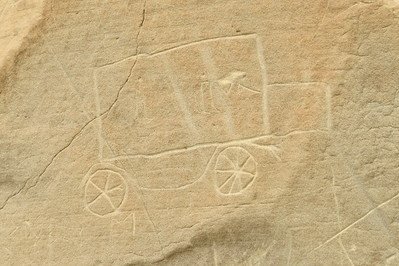
A visit to this park fitted in nicely with my Alberta itinerary, between Dinosaur Provincial Park and Head-Smashed-in Buffalo Jump. It is actually a bit of a mix of these two sites too: a stunning badlands landscape combined with Native American history. From the moment I arrived, I liked its vibe, somehow just a notch more exciting than the two other Alberta WHS.
First, there's the hoodoo extravaganza just below the visitor center. You can walk small trails and climb over the hundreds of hoodoos freely. There a so many of them, it looks somewhat like Cappadocia. Great for taking pictures or just a lazy picnic sitting on a flat stone.
And secondly, I really enjoyed my 'Rock Art' tour of the preserved area. My 2 p.m. tour had only 4 other participants. Our guide Abby, who is from one of the local Blackfoot tribes, lead us along a cliff wall where numerous rock drawings and carvings have been preserved. The oldest are reportedly over 5,000 years old, but most are much more recent. Even going up to 1924, when a returning Blackfoot native carved two T-Model Fords into the rock. Other scenes show battles and hunting. The cliff face also is covered with a lot of 'historical graffiti', going back to the late 19th century.
This area was and still is considered a sacred place where the spirits live. Labelled as a cultural landscape and displaying its peculiar type of rock art, I believe this site …
Keep reading 0 comments
This is an easy TL site to reach from Calgary, it is a 4-hours each way driving and it could be managed in a one-day road trip. I don't think there is any public transportation leading to this site, therefore a car rental is the only feasible option. The park is easy to reach even without GPS, there are plenty of road sign, once left the small town of Milk River on the hwy 501 driving east. The park is a "small replica" of the Dinosaur Provincial Park, same badlands aspect; with the landscape made of hoodoos, cliffs and the Milk river flowing in between, it would be a nice site itself, even without the "writing on stone". The visitor center is small but interesting; because of the description of the native people living in the area, it reminded me of the much bigger visitor center in Head-Smashed-In Buffalo Jump (2 hours north of this site). There are two main trails showing the rock carvings; unfortunately one of the two trails (the longest one) is open only every second weekend, and it's possible to visit only with a pre-booked guided tour (because it goes in the restricted area of the park, for archaeological researches). The trail open to the public heads to the Battle Field scene, which is indeed interesting, but since it is dated in the late 1800's, it could not be compared to the marvelous rock carvings of Alta or Valcamonica. The site is also damaged by "contemporary …
Keep reading 0 comments
